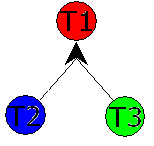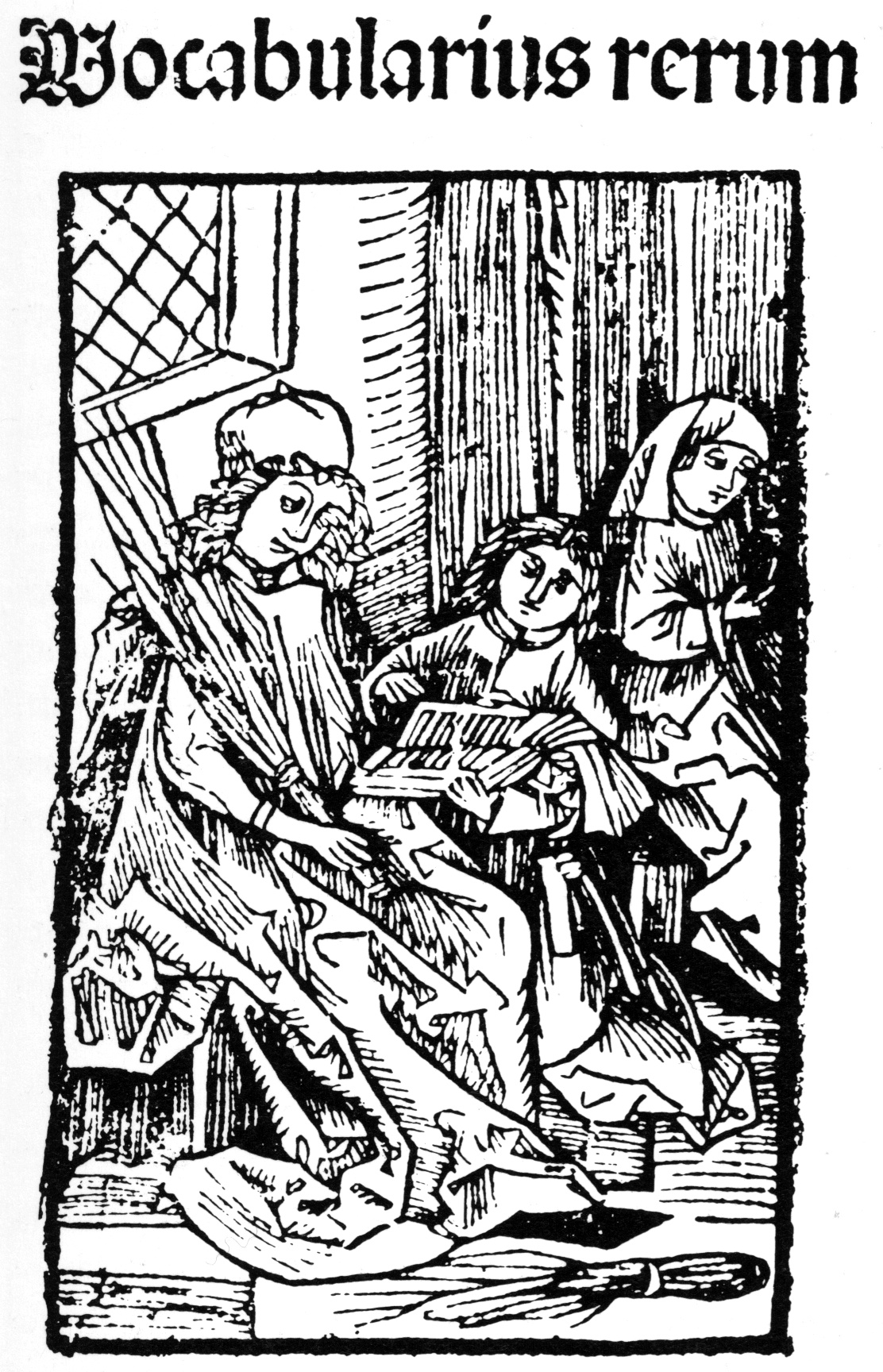|
Conversation Theory
Conversation theory is a cybernetic and dialectic framework that offers a scientific theory to explain how interactions lead to "construction of knowledge", or "knowing": wishing to preserve both the dynamic/kinetic quality, and the necessity for there to be a "knower". Following Hugh Dubberly and Paul Pangaro, a conversation in the context of conversation theory can be thought of as "the means by which existing knowledge is conveyed and new knowledge is generated”. So how do organisms engage and learn? Through a self-reflective mental loop that works recursively. Described in a more processed approach: one would open a channel, commit to engage, construct meaning and in the end either evolve or converge. This is the basis for Conversation Theory. The theory was developed by Gordon Pask, who credits Bernard Scott, Dionysius Kallikourdis, Brian Lewis and others during its initial development and implementation as well as Paul Pangaro during subsequent years. Overview Conversatio ... [...More Info...] [...Related Items...] OR: [Wikipedia] [Google] [Baidu] |
Cybernetic
Cybernetics is a wide-ranging field concerned with circular causality, such as feedback, in regulatory and purposive systems. Cybernetics is named after an example of circular causal feedback, that of steering a ship, where the helmsperson maintains a steady course in a changing environment by adjusting their steering in continual response to the effect it is observed as having. Cybernetics is concerned with circular causal processes such as steering however they are embodied,Ashby, W. R. (1956). An introduction to cybernetics. London: Chapman & Hall, p. 1. including in ecological, technological, biological, cognitive, and social systems, and in the context of practical activities such as designing, learning, managing, conversation, and the practice of cybernetics itself. Cybernetics' transdisciplinary and "antidisciplinary" character has meant that it intersects with a number of other fields, leading to it having both wide influence and diverse interpretations. Cybernetics ... [...More Info...] [...Related Items...] OR: [Wikipedia] [Google] [Baidu] |
Teacher
A teacher, also called a schoolteacher or formally an educator, is a person who helps students to acquire knowledge, competence, or virtue, via the practice of teaching. ''Informally'' the role of teacher may be taken on by anyone (e.g. when showing a colleague how to perform a specific task). In some countries, teaching young people of school age may be carried out in an informal setting, such as within the family (homeschooling), rather than in a formal setting such as a school or college. Some other professions may involve a significant amount of teaching (e.g. youth worker, pastor). In most countries, ''formal'' teaching of students is usually carried out by paid professional teachers. This article focuses on those who are ''employed'', as their main role, to teach others in a ''formal'' education context, such as at a school or other place of ''initial'' formal education or training. Duties and functions A teacher's role may vary among cultures. Teachers may provide ... [...More Info...] [...Related Items...] OR: [Wikipedia] [Google] [Baidu] |
Truth Value
In logic and mathematics, a truth value, sometimes called a logical value, is a value indicating the relation of a proposition to truth, which in classical logic has only two possible values (''true'' or '' false''). Computing In some programming languages, any expression can be evaluated in a context that expects a Boolean data type. Typically (though this varies by programming language) expressions like the number zero, the empty string, empty lists, and null evaluate to false, and strings with content (like "abc"), other numbers, and objects evaluate to true. Sometimes these classes of expressions are called "truthy" and "falsy" / "false". Classical logic In classical logic, with its intended semantics, the truth values are ''true'' (denoted by ''1'' or the verum ⊤), and '' untrue'' or '' false'' (denoted by ''0'' or the falsum ⊥); that is, classical logic is a two-valued logic. This set of two values is also called the Boolean domain. Corresponding semantics of l ... [...More Info...] [...Related Items...] OR: [Wikipedia] [Google] [Baidu] |
Analogy
Analogy (from Greek ''analogia'', "proportion", from ''ana-'' "upon, according to" lso "against", "anew"+ ''logos'' "ratio" lso "word, speech, reckoning" is a cognitive process of transferring information or meaning from a particular subject (the analog, or source) to another (the target), or a linguistic expression corresponding to such a process. In a narrower sense, analogy is an inference or an argument from one particular to another particular, as opposed to deduction, induction, and abduction, in which at least one of the premises, or the conclusion, is general rather than particular in nature. The term analogy can also refer to the relation between the source and the target themselves, which is often (though not always) a similarity, as in the biological notion of analogy. Analogy plays a significant role in problem solving, as well as decision making, argumentation, perception, generalization, memory, creativity, invention, prediction, emotion, explanation, concep ... [...More Info...] [...Related Items...] OR: [Wikipedia] [Google] [Baidu] |
HEAD
A head is the part of an organism which usually includes the ears, brain, forehead, cheeks, chin, eyes, nose, and mouth, each of which aid in various sensory functions such as sight, hearing, smell, and taste. Some very simple animals may not have a head, but many bilaterally symmetric forms do, regardless of size. Heads develop in animals by an evolutionary trend known as cephalization. In bilaterally symmetrical animals, nervous tissue concentrate at the anterior region, forming structures responsible for information processing. Through biological evolution, sense organs and feeding structures also concentrate into the anterior region; these collectively form the head. Human head The human head is an anatomical unit that consists of the Human skull, skull, hyoid bone and cervical vertebrae. The term "skull" collectively denotes the mandible (lower jaw bone) and the cranium (upper portion of the skull that houses the brain). Sculptures of human heads are general ... [...More Info...] [...Related Items...] OR: [Wikipedia] [Google] [Baidu] |
Argument From Analogy
Argument from analogy or false analogy is a special type of inductive argument, whereby perceived similarities are used as a basis to infer some further similarity that has yet to be observed. Analogical reasoning is one of the most common methods by which human beings attempt to understand the world and make decisions. When a person has a bad experience with a product and decides not to buy anything further from the producer, this is often a case of analogical reasoning. It is also implicit in much of science; for instance, experiments on laboratory rats typically proceed on the basis that some physiological similarities between rats and humans entails some further similarity (e.g. possible reactions to a drug). Structure The process of analogical inference involves noting the shared properties of two or more things, and from this basis inferring that they also share some further property. The structure or form may be generalized like so: : P and Q are similar in respect t ... [...More Info...] [...Related Items...] OR: [Wikipedia] [Google] [Baidu] |
Analogy
Analogy (from Greek ''analogia'', "proportion", from ''ana-'' "upon, according to" lso "against", "anew"+ ''logos'' "ratio" lso "word, speech, reckoning" is a cognitive process of transferring information or meaning from a particular subject (the analog, or source) to another (the target), or a linguistic expression corresponding to such a process. In a narrower sense, analogy is an inference or an argument from one particular to another particular, as opposed to deduction, induction, and abduction, in which at least one of the premises, or the conclusion, is general rather than particular in nature. The term analogy can also refer to the relation between the source and the target themselves, which is often (though not always) a similarity, as in the biological notion of analogy. Analogy plays a significant role in problem solving, as well as decision making, argumentation, perception, generalization, memory, creativity, invention, prediction, emotion, explanation, concep ... [...More Info...] [...Related Items...] OR: [Wikipedia] [Google] [Baidu] |
Cycl
CycL in computer science and artificial intelligence is an ontology language used by Doug Lenat's Cyc artificial intelligence project. Ramanathan V. Guha was instrumental in the design of early versions of the language. There is a close variant of CycL known as MELD. The original version of CycL was a frame language, but the modern version is not. Rather, it is a declarative language based on classical first-order logic, with extensions for modal operators and higher order quantification. CycL is used to represent the knowledge stored in the Cyc Knowledge Base, available from Cycorp. The source code written in CycL released with the OpenCyc system is licensed as open source, to increase its usefulness in supporting the semantic web. Basic ideas CycL has some basic ideas: * Naming the constants used to refer to information for represented concepts. * Grouping the constants together in a generalization/specialization hierarchy (usually called categorization). * Stating ge ... [...More Info...] [...Related Items...] OR: [Wikipedia] [Google] [Baidu] |
Disjunctive
Disjunctive can refer to: * Disjunctive population, in population ecology, a group of plants or animals disconnected from the rest of its range * Disjunctive pronoun * Disjunctive set * Disjunctive sequence * Logical disjunction In logic, disjunction is a logical connective typically notated as \lor and read aloud as "or". For instance, the English language sentence "it is raining or it is snowing" can be represented in logic using the disjunctive formula R \lor S ... See also * Disjoint (other) * Disjunct (other) {{disambig ... [...More Info...] [...Related Items...] OR: [Wikipedia] [Google] [Baidu] |
Semantic Networks
A semantic network, or frame network is a knowledge base that represents semantic relations between concepts in a network. This is often used as a form of knowledge representation. It is a directed or undirected graph consisting of vertices, which represent concepts, and edges, which represent semantic relations between concepts, mapping or connecting semantic fields. A semantic network may be instantiated as, for example, a graph database or a concept map. Typical standardized semantic networks are expressed as semantic triples. Semantic networks are used in natural language processing applications such as semantic parsing and word-sense disambiguation. Semantic networks can also be used as a method to analyze large texts and identify the main themes and topics (e.g., of social media posts), to reveal biases (e.g., in news coverage), or even to map an entire research field. History Examples of the use of semantic networks in logic, directed acyclic graphs as a mnemonic to ... [...More Info...] [...Related Items...] OR: [Wikipedia] [Google] [Baidu] |
Bivalent Logic
In logic, the semantic principle (or law) of bivalence states that every declarative sentence expressing a proposition (of a theory under inspection) has exactly one truth value, either true or false. A logic satisfying this principle is called a two-valued logic or bivalent logic. In formal logic, the principle of bivalence becomes a property that a semantics may or may not possess. It is not the same as the law of excluded middle, however, and a semantics may satisfy that law without being bivalent. The principle of bivalence is studied in philosophical logic to address the question of which natural-language statements have a well-defined truth value. Sentences that predict events in the future, and sentences that seem open to interpretation, are particularly difficult for philosophers who hold that the principle of bivalence applies to all declarative natural-language statements. Many-valued logics formalize ideas that a realistic characterization of the notion of conseque ... [...More Info...] [...Related Items...] OR: [Wikipedia] [Google] [Baidu] |



